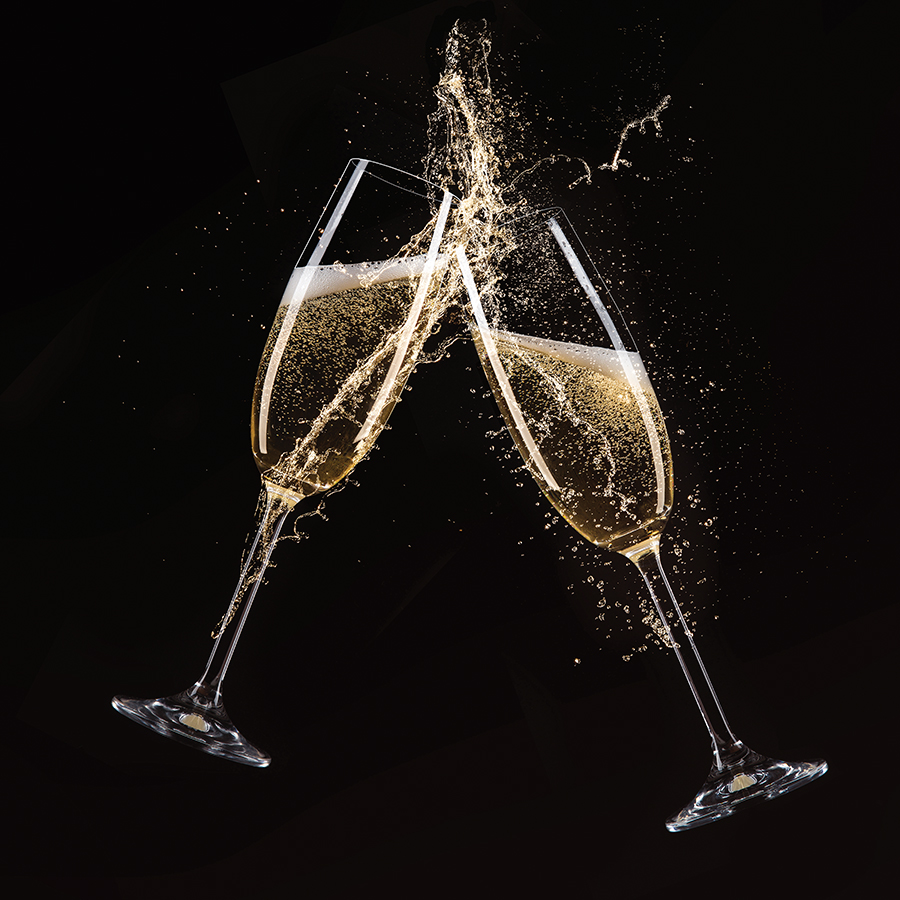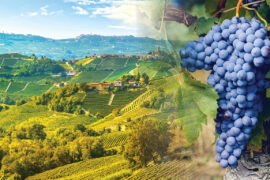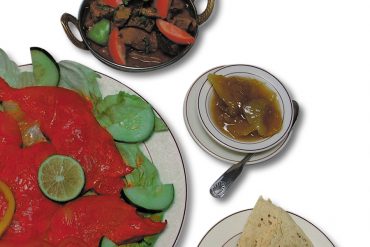My list of the top 20 sparkling wines from around the world.
By Matthew DeBord
HQ 126 | SUMMER 2024
If you’ve never enjoyed anything bubbly beyond Champagne, you might not know that almost every major winemaking region in the world produces a sparkler. In this edition of my column, I’m going to review 20 — yes, 20! — of my favorites. Admittedly, as a total Champagne snob, I will lead off with several selections of the undisputed king of bubbly. But I won’t skimp on the competition (such as it is).
Champagne is Champagne for a reason: only the products of this region of France can bear the name. In my book, Champagne is the best sparkler in the world. As I told editor Jack Houvouras years ago when he first became interested in wine, there is no such thing as a bad Champagne. There are some better than others, but even the least expensive bottles are darn good. On top of that, Champagne can be drunk with literally any food, at any time of day or night! The world’s poshest wine is also the most versatile. Here are some great ones:
Laurent-Perrier Cuvée Rosé: The most charming and delicious rosé Champagne you can buy, for around $55. A Valentine’s Day classic.
Veuve Clicquot Yellow Label: One of the most famous and popular high-caliber French bubblies. Always an excellent gift at $50-60, depending on the retailer.
G.H. Mumm Grand Cordon: A middle-of-the-road Champers that’s easy to find just about anywhere. Also priced at between $50-60, at most shops. Not too heavy and rich, but also not too zingy and crisp.
Nicolas Feuillatte Reserve Exclusive Brut: At about $40, this reliable bottling is available everywhere and makes a fine choice as a party Champagne for large events. Crisp and tasty.
Dom Perignon Brut: A splurge! Dom is legendary and is issued only in vintage years, unlike many other famous Champagnes. Full-bodied and frothy, Dom is expensive, with coveted bottles going for $200 and up.
Pol Roger Brut Reserve: This $70 bubbly is famous due to the house’s association with Winston Churchill. A full-flavored Champagne, with buttery notes, it’s a throwback that offers an introduction to what the British like about Champagne and why they have always been big on the stuff.
Billecart-Salmon Demi-Sec: Demi-Sec means “half dry,” and what that translates into is Champagne that is “dosed” with a bit more sweetness at the end of the unique winemaking process. It’s an acquired taste if you’re used to dry sparklers, but at $55, it’s not a big risk to add to your cellar.
Taittinger Brut: At about $60, this is a superb special-occasion bubbly that never disappoints. Keep it around to toast all those big moments in life!
Pommery POP: Pommery is a famous Champagne house, but it isn’t stuffy, as POP proves. For $60, you get four fun mini-bottles to take to your next party.
Moving on, let’s head south to Italy and explore two local bubblies, Asti Spumante and Prosecco. The Italians aren’t fancy when it comes to their sparklers, and neither should you be. Inexpensive Asti and Prosecco are just about as good as the pricier stuff, so find one you like for under $20 and stock up:
Mionetto Prosecco Brut: This $15 bottling is all the Prosecco you’ll ever need. Hailing from the Veneto region, it’s an upbeat wine that feature bright apple flavors and a slight bitter edge that Italians enjoy.
La Marca Prosecco: Also $15 a bottle, La Marca can be found in just about every wine shop in the U.S., as well as online. A bit more crisp, in my opinion, than Mionetto.
Tosti Asti Spumante: This is the opposite of a connoisseur’s wine — wine snobs look down on Asti Spumante, made in the Piedmont region of northern Italy, because it’s an unassuming sweet sparkler. Personally, I find it charming and, at around $13 a bottle, a nice accompaniment to dessert.
Champagne is Champagne for a reason: only the products of this region of France can bear the name. In my book, Champagne is easily the best sparkler in the world. — Matthew DeBord
In Spain, the bubbly is called “Cava,” and it corresponds to Prosecco in quality and reputation.
If you detect a theme here, it’s that Champagne is the European region that went to high quality and high style. That’s because the other wines of the Champagne region are awful; the bubbles were the only thing that really stood out. In southern Europe, a hotter climate supported the production of still red and white wines, so sparklers were relegated to the viticultural equivalent of soda. Regardless, a tasty Cava is a refreshing lunchtime or pre-dinner quaff:
Freixenet Cordon Negro Brut: Probably the best-known Cava in the U.S., and at $13 a bottle it’s worth keeping around. Pleasantly fruity, with nutty undertones, this is a perfect bubbly to drink before a summer dinner.
Marqués de Cáceres Cava Brut: A very affordable bubbly from one of the Rioja region’s most ambitious producers. At about $10, this Cava is nothing fancy, but it’s a good place to begin with Spain’s traditional alternative to Champagne.
Germany also produces a sparkler, called “Sekt,” but it is difficult to find outside of Germany itself. So, let’s move on to the New World and start with California. In the Golden State, bubbly is common but not wildly successful. Americans seem to prefer Champagne and Prosecco overall, but that doesn’t mean good Cali bubbly is hard to locate:
Domaine Carneros Brut Cuvée: This is the most famous U.S. maker of sparkling wine, with bottlings across many styles and price points. At $40, this example is the house standard, made from a blend of Chardonnay and Pinot Noir and pulling off a very good imitation of French Champagne.
J Vineyard Brut Rosé: Another pink bubbly, this time from a higher-end U.S. producer that also does well-regarded still wines. At $50, this sparkler isn’t cheap, but it’s full of complex berry flavors and offers a bracing acidity that enables it to pair with a wide range of foods.
Schramsberg Blanc de Blancs: This all-Chardonnay sparkler is an American classic, in production since 1965 and still priced under $40. It is thoroughly refreshing, with lovely pear and apple flavors, and would be my house bubbly.
Roederer Estate Brut: This $35 blend of Chardonnay and Pinot Noir is quite middle-of-the-road, making it a true crowd pleaser.





